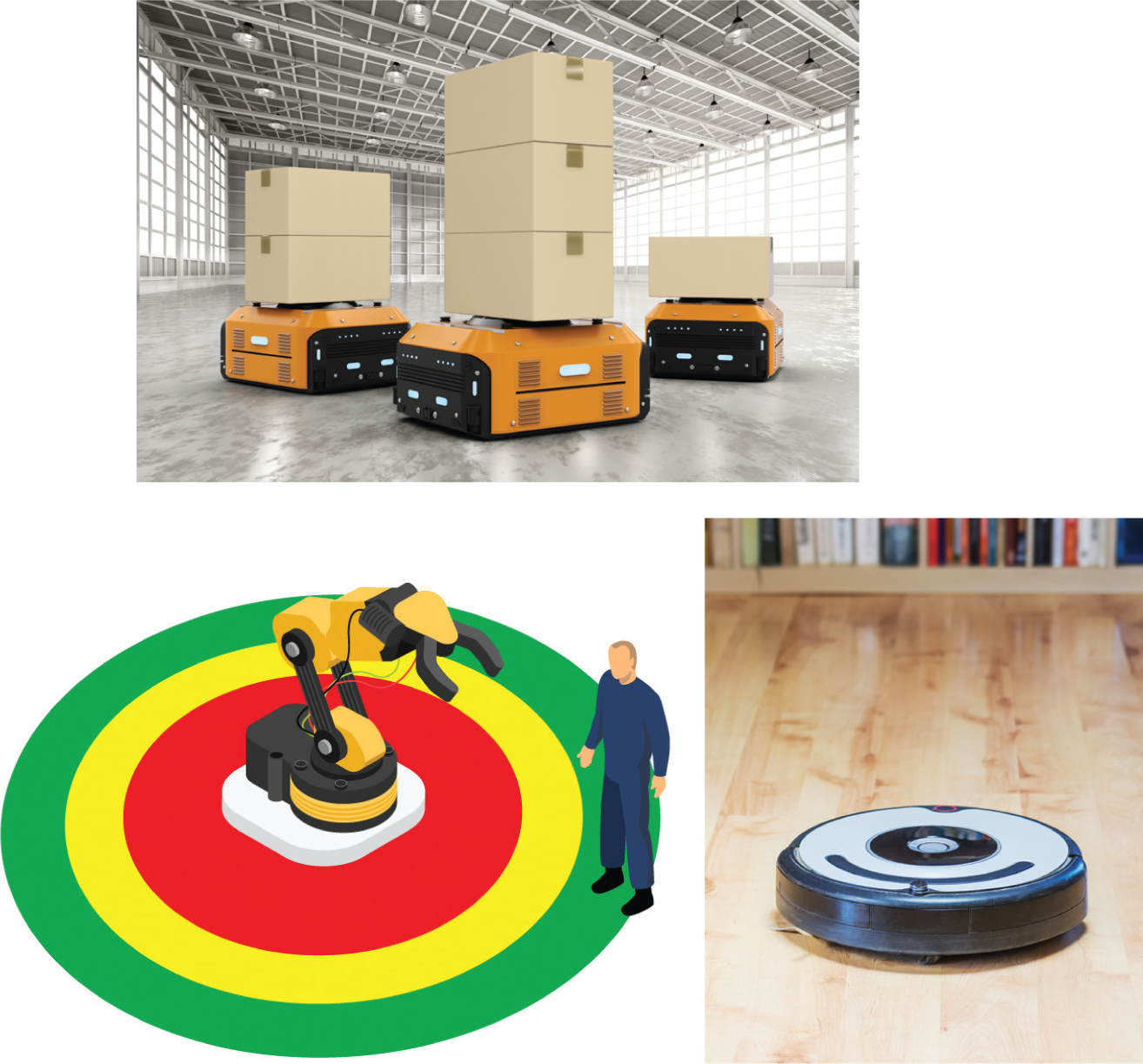SPRY334B april 2020 – may 2023 AWR6843AOP , IWR6843AOP
- 1
- Antenna-on-package Sensor Design
- Using TI mmWave Sensors with an AoP Design for Industrial 3D Sensing
- Robotics: Collision Prevention over a Wide Area
- Occupancy Detection: Simplified Sensing in Wall- and Ceiling-mounted Placements
- Automated Doors and Gates: Position- and Velocity-based Operation in Tight Spaces
- Conclusion
- Additional Resources
Robotics: Collision Prevention over a Wide Area
Industrial robots are designed to move slowly when operating alongside humans. Robotic arm and autonomous robot makers must implement a high level of environmental sensing and redundancy into robot systems to quickly detect and prevent possible collisions, using 3D sensing capabilities to define safe and danger zones.
 Figure 2 TI mmWave AoP Sensors Enable
Automation in a Variety of Robots in Factories and Homes.
Figure 2 TI mmWave AoP Sensors Enable
Automation in a Variety of Robots in Factories and Homes.TI mmWave AoP sensors enable a wide variety of robotic applications, as shown in Figure 2. A wide FoV translates into more coverage around robots for collision avoidance on factory floors, and the small form factor makes it easy to fit into smaller robot designs like cleaning robots.
Along with 3D object detection for robotics applications, AoP sensor design addresses three main challenges for factory automation:
- Wide coverage with single sensor: An AoP design can detect objects across a 130-degree FoV, which enables wider area coverage from which to detect multiple moving objects or people for better incident management in robotics. This in turn reduces the number of sensors used for area scanning and reduces overall system cost.
- Small form factor: The smaller form factor of AoP sensors means that they can fit into smaller enclosures, which is important for sleek, small autonomous robot designs such as autonomous guided vehicles, delivery robots, and smaller robotic arms in factories for sense-and-avoid applications.
- Fast time to market: By eliminating expensive PCB substrates and RF expertise, AoP sensors simplify the design and manufacturing process, enabling in-house designs and reducing time to market.